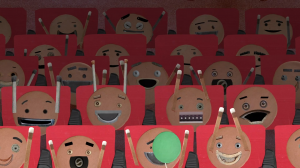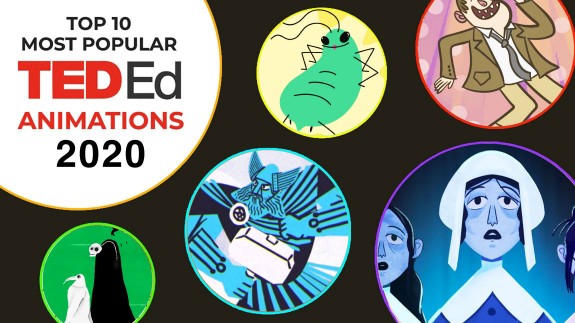
The 10 most popular TED-Ed Animations of 2020
In 2020, our YouTube audience spent nearly 32 million hours watching TED-Ed Animations (that’s equal to over 3,600 years!). Our most-viewed videos of 2020 include a couple of lovestruck tricksters, a self-cloning candy-pooping bug, a mysterious mathematician, a handful to help understand pandemics, and more.
Behold our top 10 most popular videos of 2020:
1. When is a pandemic over?
Consider the following scenario: a highly infectious, sometimes deadly respiratory virus infects humans for the first time. It spreads rapidly worldwide, and the WHO declares a pandemic. The death toll starts to rise and everyone is asking the same question: when will the pandemic end? Alex Rosenthal details the three main strategies governments can use to contain and end a pandemic.
2. The tale of the doctor who defied Death
A husband and wife were in despair. The woman had just given birth to their 13th child, and the growing family was quickly running out of food and money. Wandering into the woods, the father encountered a skeletal figure with sunken eyes and a gaunt face: this was Death himself, come to offer his services as Godfather. Iseult Gillespie tells the tale of Death and the doctor.
3. How does alcohol make you drunk?
Ethanol: this molecule, made of little more than a few carbon atoms, is responsible for drunkenness. Often simply referred to as alcohol, ethanol is the active ingredient in alcoholic beverages. So how exactly does it cause drunkenness, and why does it have dramatically different effects on different people? Judy Grisel explores alcohol’s journey through the body.
4. The bug that poops candy
Aphids can reproduce incredibly fast: they can make 20 new generations within a single season. And that means lots of poop. Some aphid populations can produce hundreds of kilograms of poop per acre— making them some of the most prolific poopers on the planet. We know this poop as the sweet, syrupy liquid called honeydew. George Zaidan explores the wonderfully weird life of an aphid.
5. What really happened during the Salem Witch Trials
You’ve been accused of a crime you did not commit. It’s impossible to prove your innocence. If you insist that you’re innocent anyway, you’ll likely be found guilty and executed. But if you confess, apologize, and implicate others, you’ll go free. This was the choice facing those accused of witchcraft in Salem, Massachusetts in the 17th century. How did this happen? Brian A. Pavlac investigates.
6. The tale of the boy who tricked the Devil
In a small town, a proud mother showed off her newborn son. Upon noticing his lucky birthmark, townsfolk predicted he would marry a princess. But soon, these rumors reached the wicked king. Enraged, the king stole the child away, and sent him hurtling down the river. But the infant’s luck proved greater than the king’s plan. Iseult Gillespie tells the tale of the boy’s journey to meet the Devil.
7. How fast can a vaccine be made?
When a new pathogen emerges, our bodies and healthcare systems are left vulnerable. And when this pathogen causes the outbreak of a pandemic, there’s an urgent need for a vaccine to create widespread immunity with minimal loss of life. So how quickly can we develop vaccines when we need them most? Dan Kwartler describes the three phases of vaccine development.
8. What’s that ringing in your ears?
Tinnitus has been bothering humanity since Ancient Babylon, plaguing everyone from Leonardo da Vinci to Charles Darwin. Today, roughly one in seven people worldwide experiences this auditory sensation. So what exactly is tinnitus, and where does this persistent sound come from? Marc Fagelson travels into the auditory system to explore the loss of silence.
9. The greatest mathematician that never lived
When Nicolas Bourbaki applied to the American Mathematical Society in the 1950s, he was already one of the most influential mathematicians of his time. He’d published articles in international journals and his textbooks were required reading. Yet his application was firmly rejected for one simple reason: Nicolas Bourbaki did not exist. How is that possible? Pratik Aghor digs into the mystery.
10. Can you solve the Ragnarok riddle?
Ragnarok: The fabled end of the world, when giants, monsters, and Norse gods battle for the future. The gods were winning until the great serpent Jörmungandr emerged. It swallowed Valhalla and contorted itself across the land. Odin has just enough power to strike with one final bolt of lightning, and you have the fabled hammer, Mjölnir. Can you two destroy the serpent? Dan Finkel shows how.
On behalf of everyone here at TED-Ed, thanks for learning with us this year!
To get brand new TED-Ed Animations delivered to your inbox for free in 2021, sign up for the TED-Ed weekly newsletter here >>




